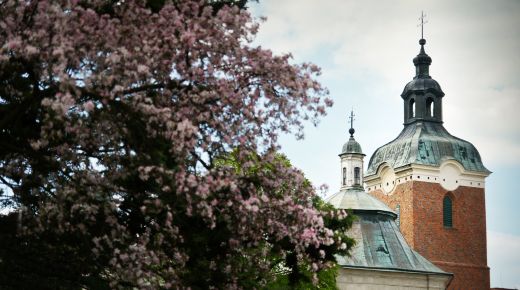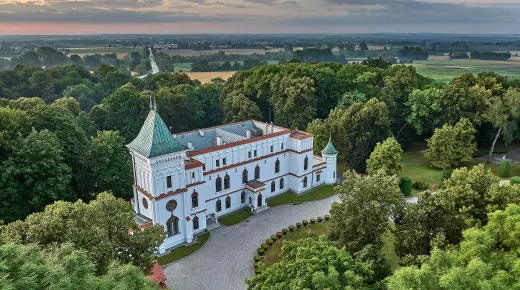During a visit to Łańcut vast majority of tourists go straight to the most famous attraction, the castle of the Lubomirski family. Many people fail to notice the synagogue, located in the very centre of the town
The simple and modestly looking edifice contains an interior which amazes with the lush decorations and the monumental dimensions – the main hall reaches the height of 9.2 m. Undoubtedly the most impressive structure here is the bimah, i.e. elevated platform standing in the middle of the main hall, used for Torah reading. Another notable feature, the beautifully ornamented Aron Kodesh (a closet containing the Torah scrolls) is located along the eastern wall. The walls and ceilings are covered with highly elaborate and colourful polychrome and stucco decorations dating from the 18th, 19th and early 20th century, and the semi-circular panels are filled with texts of prayers.
An important place within the synagogue is the so-called Lublin Hall. At the start of the 1800s the renowned tsaddik Jacob Isaac Horowitz (1745–1815) lived for a while in Łańcut. He had his room in the synagogue, and here he would pray, study and lead disputes with other Hasidim. Referred to as the Holy Man of Łańcut, he later moved to Lublin and gained renown for his unusual ability to see across time and distance and became known as the Seer of Lublin. One of his disciples was Rabbi Naftali Zvi from Ropczyce (1760–1827), a master of Kabbalistic interpretation of the Torah. On 8 May 1827 he stopped in Łańcut, probably on his way to Lublin, where he wanted to visit the grave of his teacher, and it is believed he said: It smells like Paradise here. After these words he collapsed and died, and because in accordance with Jewish tradition a dead person must be buried before the sun set, his grave (Ohel) is located at the Jewish cemetery in Łańcut.
Places worth seeing in the the surrounding area:
Pottery Croft in Medynia Głogowska
Photo: Krzysztof Zajączkowski



